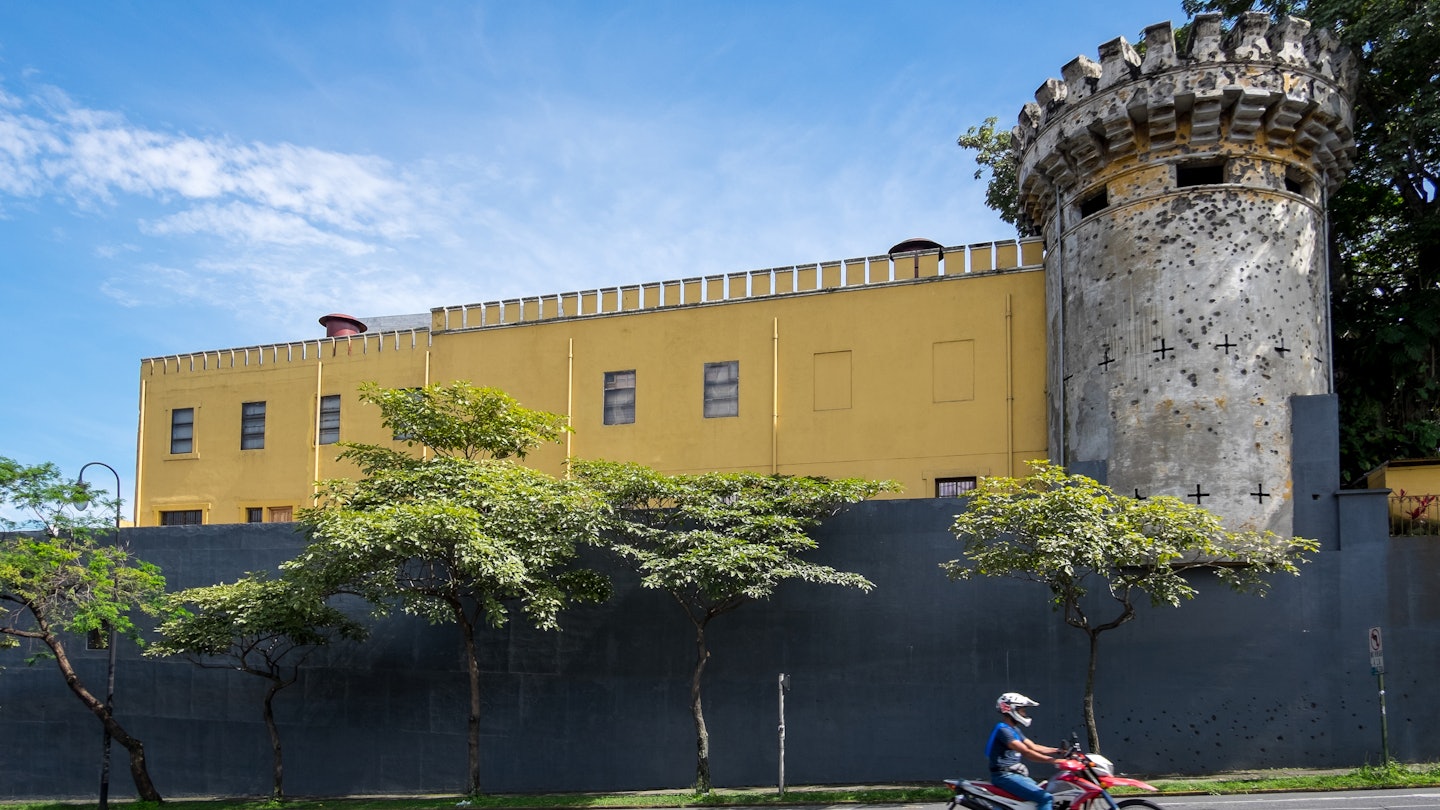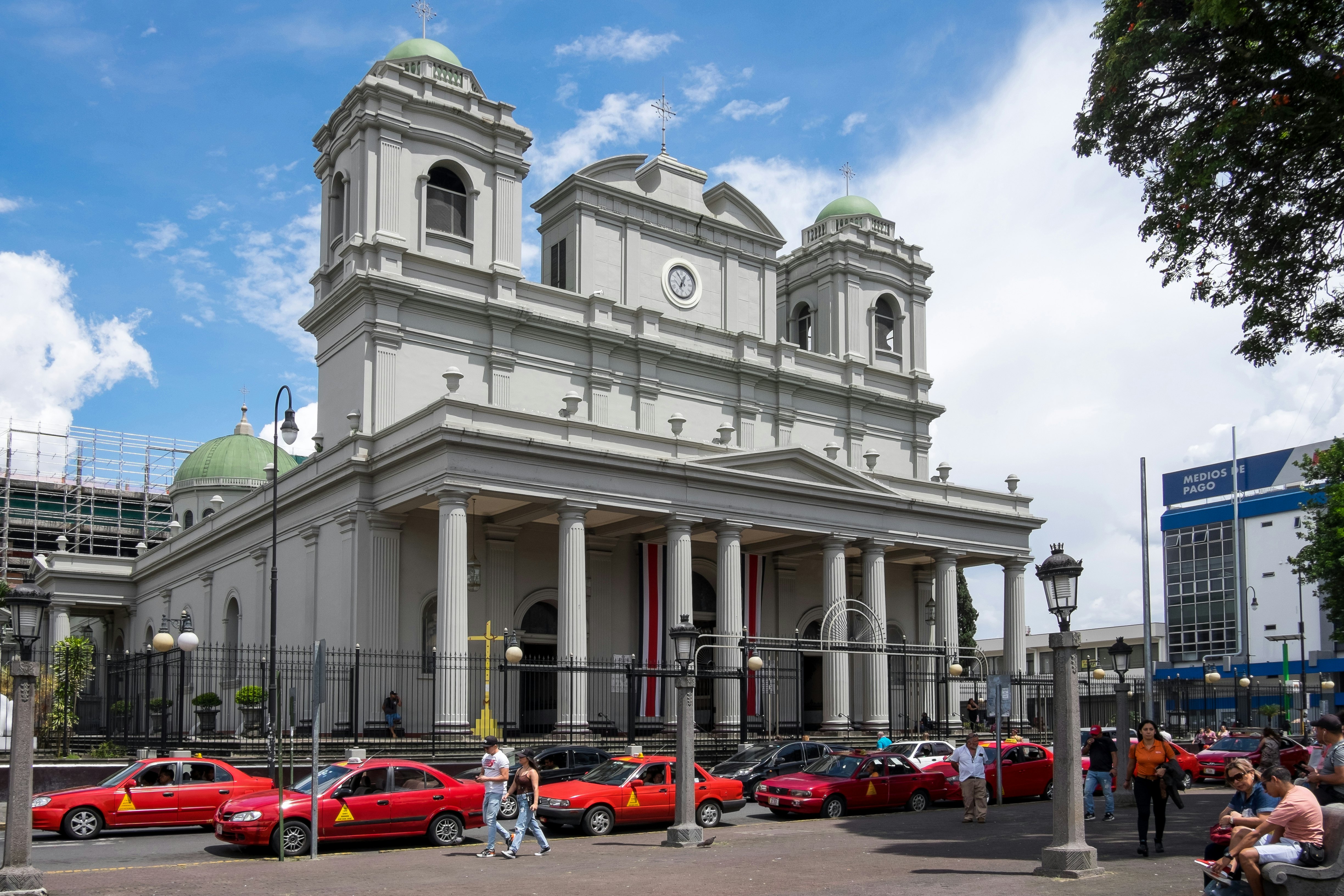

The capital of Costa Rica can be confusing and difficult to navigate, but it's always an adventure © Salvador-Aznar / Getty Images
To put it politely, getting around San José is always an adventure.
The capital of Costa Rica started as several different towns, which gradually merged together over a landscape of rolling hills. The city has experienced rapid growth in recent decades, along with bold experiments in “urban renewal.” The resulting street patterns can be confusing, claustrophobic and extremely hard to navigate, especially for first-timers.
But take heart: more than 300,000 residents move around this city every day, most of them on foot or by bus, and once you get a feel for the place, the major sights are pretty accessible. Taxis are easy to find and can take you anywhere, and transport options only get more budget-friendly from there. Expect some trial and error, but with a little patience, you can get there from here.

Conquer the crowds on foot
Despite appearances, San José is relatively walkable. The “city” is usually measured between the neighborhoods of La Sabana and San Pedro, and you could casually stroll these 8km in less than two hours. Everything in the middle is reachable on foot – and in some cases, hoofing from one landmark to another is faster than any other means. The complex layout and endless one-way streets are far less stressful when you can just stop and turn around.
Like many urban centers, San José is packed with hawkers and panhandlers, and in crowded areas like Avenida Central you won’t walk more than a block without some solicitation. Watch the side streets for cross-traffic, as speeding cars often appear from nowhere. Evenings can be particularly foreboding in San José, and it’s wise to walk in pairs or groups as you explore the robust local nightlife.
We also recommend sensible shoes. Litter is a major problem downtown, as are uneven sidewalks and deep potholes. This may be the tropics, but for a long promenade, you’ll be grateful you kept those hiking boots on.

Master the bus system like a local
City buses are cheap, dependable and easy to ride. Better yet, San José is the epicenter of bus traffic, not only for the Central Valley but for the entire country. You’ll rarely have to pay more than 650 colones (about US$1) to get anywhere in the city and its environs, and the vast majority of urban Ticos commute by mass transit, so you’re in good company. Bus drivers keep a bundle of cash and a boxful of coins, so paying your fare is an easy way to break medium-sized bills.
Most passengers are well-behaved on the bus as well. You might hear a song being played too loud from a smartphone, but most rides are blissfully quiet.
The one drawback is the complexity of the system; stops and routes are scattered throughout the city, and it’s often hard to tell where to board and when the bus will arrive. Virtual maps can be helpful, but it’s smart to double-check with locals.

Get anywhere in a red taxi
The go-to cab service in San José is the taxi rojo (red taxi), and sure enough, each car is painted fire-engine red. Legions of taxis ride through the streets and park in queues, and they’re easy to flag down. Most taxistas are honest, but when you enter the car, make sure that the maría (meter) is visible and working.
The taxis rojos have received a lot of competition from Uber, to the chagrin of local drivers. Both are dependable options and a great alternative to long walks through downtown throngs.
Insider tip: Some cars are painted red, but they’re not official taxis. Other drivers skip the facade and just use their regular cars, offering rides for cash. These cabs are known as piratas (pirates), and although many are nice guys trying to make a quick buck, we don’t recommend using one if you can avoid it.
Drive, if you dare
All across Costa Rica, a rugged 4WD will take you to secret corners you never imagined, and you’ll be so grateful you rented some wheels, except in San José. Visitors should avoid driving in the city until it’s absolutely necessary.
Driving in the capital is confusing, nerve-wracking and often dangerous. Streets are narrow, people and pets routinely wander into the road, and near-invisible speed bumps (affectionately known as muertos, or “dead bodies”) can wreck your axle. In highway gridlock, assume that motorcyclists will whiz between the ranks of idling cars.
On the bright side, Ticos don’t usually drive very fast. Most motorists are assertive and pushy, but you’ll rarely encounter road rage, even in the worst traffic. There are many places to rent a car downtown, which is convenient for escaping the sprawl, but if you’re just hopping around local neighborhoods, a taxi is far more pleasant.
Insider tip: Parking takes many forms in San José. The sign to watch out for is parqueo (parking lot or garage). If your hotel doesn’t have dedicated parking, these secure lots are the safest place to stow your ride. Street parking can be a head-scratcher, especially in neighborhoods like Barrio Escalante, where certain spaces are best reserved with an app.
On most streets, you’ll find a man passively watching the cars. He’s usually older and may wear an orange vest. This person is a guachimán (watchman), and you can usually pay him the equivalent of a dollar to help you parallel park and make sure nobody messes with your vehicle. With rare exceptions, this is a well-established system and worth the pocket change.
Ride the rails with commuters
The San José train system is one of the city’s best-kept secrets, and few tourists ever think to ride it. The central hub is the Estación Atlántico, a historic little building on the edge of Barrio Escalante.
You can buy a ticket at the window, and the train will slice through stand-still traffic like a machete through a ripe mango. Most trains only run in the mornings and afternoons, but the lines will take you to such far-off suburbs as Alajuela, Heredia, Curridabat and Cartago.
Accessible Travel in San José, Costa Rica
Costa Rica has made great leaps in accessibility in recent years, and San José's more popular destinations – such as the Teatro Nacional – often have ramps for wheelchairs and staff sensitive to disabilities. Newer hotels are equipped with elevators, and taxis can be a convenient way to get around.
That said, the capital has a long way to go: sidewalks are narrow and curb cuts are scattered. Accessible restrooms can be very hard to come by, and public buses aren’t generally equipped with wheelchair lifts. Ironically, San José can be much more challenging than the national parks, such as the “universally accessible” Parque Nacional Cara.
For more information, see Lonely Planet’s Accessible Travel Resources page.
















